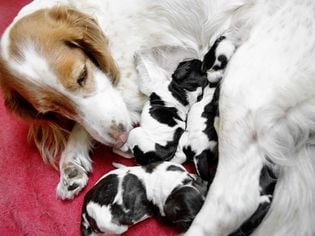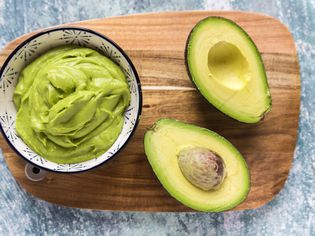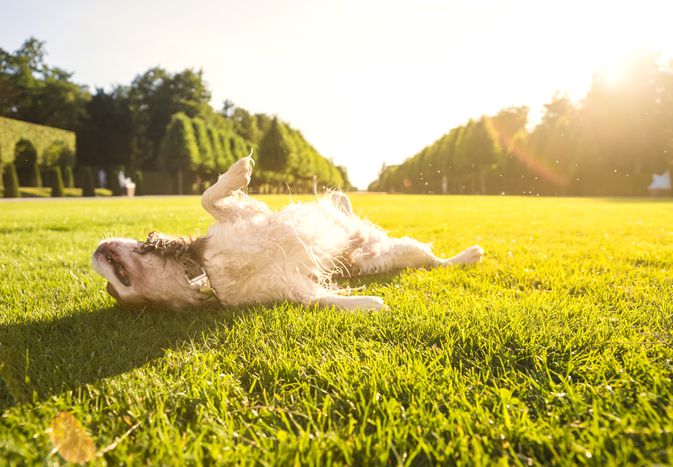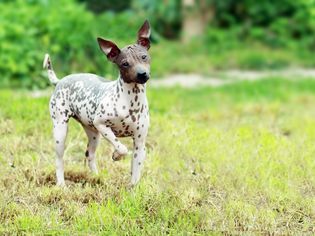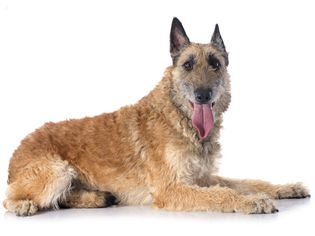The Bouvier des Flandres is a large herding breed from Belgium with a sturdy body to pair with its wiry fur, floppy ears, bearded face, and fluffy appearance. This confident, powerful dog is an expert at putting their size (up to 27.5 inches tall and up to 100 pounds) and intelligence to work.
The breed's beard is one of its most recognizable features. In fact, the Bouvier's Dutch nickname, vuilbaard, means "dirty beard." While this sizeable, rugged herding dog is known for being agile on the job, they're also a loyal companion that prefers to be with people.
Learn more about the Bouvier des Flanders, from their history to care needs.
Breed Overview
Group: Herding
Height: 23.5 to 27.5 inches
Weight: 70 to 100 pounds
Coat: Long, shaggy, rough double coat
Coat Color: Salt and pepper, gray, fawn, brindle, or gray and brindle
Life Span: 10 to 12 years
Temperament: Intelligent, friendly, loyal, protective, active
Hypoallergenic: Yes
Origin: Belgium
Characteristics of the Bouvier des Flandres
The Bouvier des Flandres is a loyal dog that craves human companionship. This breed is known for a loving personality and amiable temperament toward family. However, it's not the best for novice dog parents.
This dog has plenty of energy and can become destructive around the house when not exercised mentally and physically each day. They're very fond of children and protective of family, but don't do well with cats and can be aggressive toward other dogs if they aren't raised together.
Bouvier des Flandres dogs are highly intelligent and do best when they have enough mental and physical stimulation. Raising this breed properly can result in a long, happy, and fulfilling friendship.
| Affection Level | High |
| Friendliness | Medium |
| Kid-Friendly | High |
| Pet-Friendly | Low |
| Exercise Needs | High |
| Playfulness | High |
| Energy Level | High |
| Trainability | Medium |
| Intelligence | High |
| Tendency to Bark | High |
| Amount of Shedding | Low |
History of the Bouvier des Flandres
The Bouvier des Flandres, whose name means “cow herder of Flanders,” originated in Belgium. The breed was developed as a multi-purpose farm dog during the late 19th century. Bouviers are believed to have been bred from Irish wolfhounds, Scottish deerhounds, and local farm dogs. They were used as drovers, draft animals, and protectors.
The breed was known best as an excellent cattle herder, which is the meaning of the French word "bouvier." Nicknames for the breed included vuilbaard (dirty beard), koehond (cow dog), and toucheur de boeuf (cattle driver).
By the early 20th century, the Bouvier had grown in popularity. An official breed standard was established in 1912. World War I and the battlefields of Belgium nearly wiped the breed out, as the Bouvier was used for military purposes. Fortunately, some survived and enthusiasts repopulated the breed.
The Bouvier arrived in the United States in the late 1920s and was recognized by the American Kennel Club (AKC) in 1929. In Belgium, the title of a champion still requires that the dog has won a working dog competition.
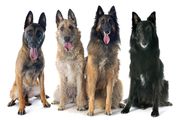
Bouvier de Flandres Care
The Bouvier is usually easy to train, responding best when you use positive reinforcement and avoid methods involving punishment. Because of this dog's high energy level and long, shaggy coat, their exercise and grooming needs can be fairly time-consuming to stay healthy.
Exercise
The Bouvier may appear to be calm and laid-back, but the breed still requires about one to two hours of daily exercise. A fenced-in yard is best to give your dog plenty of space to run, but play sessions and walks are still very important.
Establish a daily routine of several different activities to provide both physical exercise and mental stimulation for your Bouvier. You might find that your dog's natural herding instincts kick in to herd you when you walk together.
Along with regular forms of exercise, the Bouvier excels at canine sports like agility training. This is a great option to work your dog's mind and body at the same time.
These dogs enjoy various activities, such as:
- Herding trials
- Walking
- Running
- Hiking
- Fetch
- Tracking
- Obedience
- Agility
Grooming
The Bouvier has a waterproof double coat—rough fur covers a soft, dense undercoat—that doesn’t shed much. The dog requires frequent and extensive grooming in order to keep their shaggy coat in good shape. Bathing a few times per year will also help keep the coat clean and healthy.
Loose hairs are retained in the double coat and must be combed out. A lack of proper grooming can lead to serious matting (which may require trips to a professional groomer).
Some people prefer to keep the coat trimmed short, but you will need a groomer who knows the right way to trim this dog to get the appropriate look. Though the grooming demands of the Bouvier are high, a benefit of the coat type is that it sheds very little.
You'll find that this dog's coat naturally picks up debris from daily walks. Thus, you will need to spend some time after each exercise session cleaning these dogs and any dirt that they track into the house.
Nail Care
To prevent your dog’s nails from growing too long, trim them on a regular basis. Use a high-quality dog nail clipper to get the job done quickly, safely, and correctly.
Ear Care
The Bouvier has floppy ears, so it’s important to check them often to look for signs of infection, dirt, debris, yeast, mites, and inflammation.
You can use an ear cleaner for dogs to gently and effectively clean the ears. But if you see signs that something might be wrong with your dog’s ears, consult a veterinarian.
Oral Care
Like all dogs, Bouviers can benefit from having their teeth brushed at home in between oral health checkups at the vet. This can help keep their teeth clean and prevent problems like gum disease.
Eye Care
Check your dog’s eyes often to be sure they’re healthy and don’t show signs that something is wrong and needs veterinary attention. Also, the Bouvier can have tear staining, which you can clean gently with a soft cloth and tear stain remover.
Training
The Bouvier is driven and intelligent. Like most herding dogs, they possess a strong prey drive. Therefore, the breed requires a solid foundation of obedience training and strict discipline. This is a very large dog that can be difficult to handle without proper training.
To make the most of this breed’s high intelligence and loyalty to family, socialize your puppy to be comfortable and confident in various settings and around various people. Bouviers are reserved around visitors and strangers. If not properly socialized, this breed may become overly protective or shy.
The Bouvier can make a wonderful pet for many kinds of households, but this breed is not for everyone. Use caution around cats and other smaller animals until you have a good idea of your Bouvier's prey drive. Bouviers will do best with smaller animals when they have been raised together.
This breed can get along well with children, but be aware that they may try to herd them (especially small children). In addition, young Bouviers may not realize their size and are prone to knocking over little kids. Consistent and structured training along with exercise is key.
A Bouvier needs interaction with family, and doesn't do well when left alone for long periods. Otherwise, your dog may develop behaviors like chewing and barking.
Common Health Problems
Responsible breeders strive to maintain the highest breed standards as established by kennel clubs like the AKC. Dogs bred by these standards are less likely to develop hereditary conditions, but some hereditary health problems can still occur in the breed.
Common conditions associated with the Bouvier des Flandres include:
- Elbow and hip dysplasia: These orthopedic conditions cause a malformation in your dog's elbow or hip joints as they age. Severe cases may require surgery.
- Hypothyroidism: Also known as underactive thyroid, hypothyroidism prevents the thyroid from producing normal amounts of important hormones.
- Eye conditions: The Bouvier can develop eye issues like glaucoma, which causes increased pressure in the eye and is a painful condition that eventually leads to blindness. They can also develop cataracts, which is a clouding of the lens, and entropion, which causes the eyelids to roll inward. Dogs showing signs like excessive blinking, rubbing at the eyes, redness, or bulging eyes should see a veterinarian as soon as possible.
- Gastric dilatation-volvulus (GDV or bloat): Common in large dogs, bloat consists of a buildup of gases in the stomach that cause it to twist. Your veterinarian may recommend preventative surgery to tack the stomach down.
- Laryngeal paralysis: This condition affects the larynx in the throat, impairing the dog’s ability to breathe and swallow properly. It can cause an odd-sounding bark.
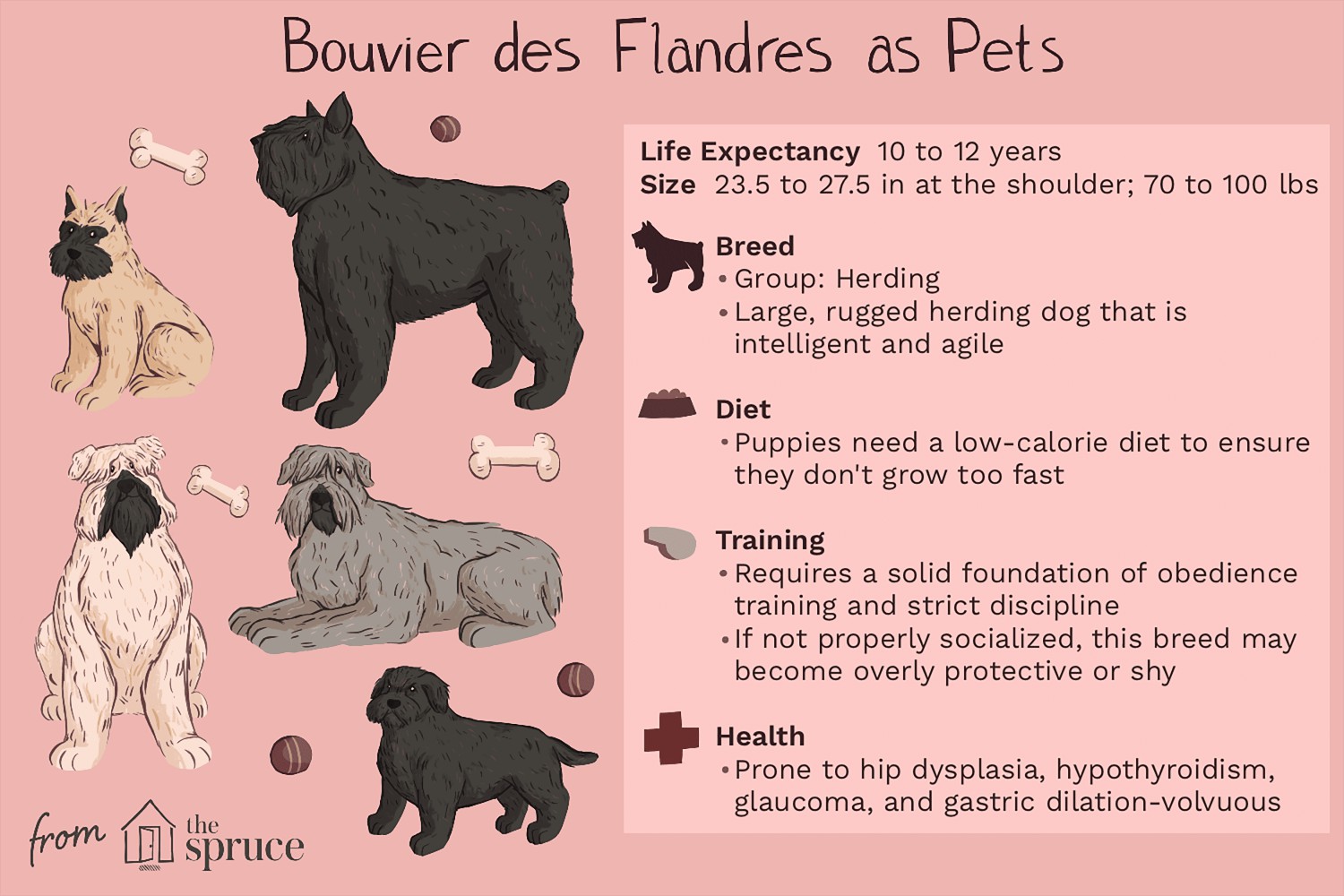
The Spruce / Emilie Dunphy
Diet and Nutrition
Bouviers should be fed two meals per day of high-quality dog food. You can also feed this dog several smaller meals per day or use a slow-feeder bowl to help prevent bloat, but as a large breed, the Bouvier should not eat one large portion. Bouviers are prone to bloating and stomach torsion, which can happen if they gulp down their food quickly or eat too much at one time. This is a medical emergency.
Bouvier des Flandres puppies need a low-calorie diet to ensure they don't grow too fast, which can make them more prone to bone disorders. This breed is also known for odorous flatulence, so you should be prepared for this before adoption.
Monitor your dog's weight to ensure they don't become too heavy, which will predispose them to more health conditions. Your dog's nutritional needs will change throughout their lifespan. Discuss this with your veterinarian to get recommendations for feeding schedules along with the best amount of food, type of food, and exercise for your dog.
Where to Adopt or Buy a Bouvier des Flandres
These dogs tend to be quite expensive, especially when buying a purebred dog from an experienced breeder. Bouvier puppies typically cost between $1,500 and $2,500, but prices may be considerably higher depending on the litter's pedigree and availability.
If you think the Bouvier des Flandres is right for you, it's helpful to do additional research before adopting one. Talk to other Bouvier des Flandres owners, reputable breeders, and rescue groups to learn more.
Since this is a rare dog breed, it's unlikely to find a Bouvier in shelters, but your local shelter may have similar dogs that are waiting for their forever homes.
When adopting a Bouvier as a puppy, finding a responsible breeder is essential. You should be provided with the litter's medical history, allowed to meet their parents, and able to see the conditions the dogs are kept in. Private breeders of Bouvier des Flandres dogs can be found around the country.
These resources for breed-specific rescues, the national breed club, and the AKC can help you start your search:
- American Bouvier Rescue League
- American Bouvier des Flandres Club
- AKC Bouvier des Flandres Breeders
Bouvier des Flandres Overview
The Bouvier des Flanders can be a great breed for the right family. These dogs are loving companions, but they aren’t appropriate for all households, such as those with other pets. They also need to be properly socialized during puppyhood, and need to be exercised daily.
Pros of the Bouvier des Flanders
- Rare breed with a distinct look
- Naturally driven and intelligent
- Loyal companion
Cons of the Bouvier des Flanders
- High-maintenance grooming needs
- Strong prey drive
- Requires a high level of physical and mental stimulation
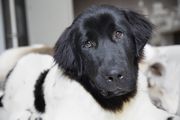
More Dog Breeds and Further Research
If you love the Bouvier des Flandres, you might also like these similar breeds:
- Scottish Deerhound
- Old English Sheepdog
- Otterhound
There are plenty of different dog breeds that can join your family. With a little research, you can find your next best friend!
- Is the Bouvier des Flanders an intelligent dog?
Yes, the Bouvier is an intelligent dog. They do best when they get the right training along with plenty of physical and mental stimulation.
Is the Bouvier des Flandres a good family dog?Loving and intelligent, the Bouvier des Flandres can make an excellent family dog for the right people. This breed needs extensive exercise, grooming, and training to be a well-mannered companion.
Is the Bouvier des Flandres rare?The Bouvier des Flandres is a rare dog breed in the United States, but it is still possible to adopt one of these dogs from a private breeder. It's essential to work with responsible breeders that perform the appropriate genetic health tests on parent dogs before breeding.
Do Bouviers shed?With a low-shedding coat, the Bouvier des Flandres is considered a hypoallergenic dog breed. However, no dog is truly hypoallergenic, and the Bouvier also requires consistent grooming to keep the thick double coat healthy and tangle-free.
More like this


